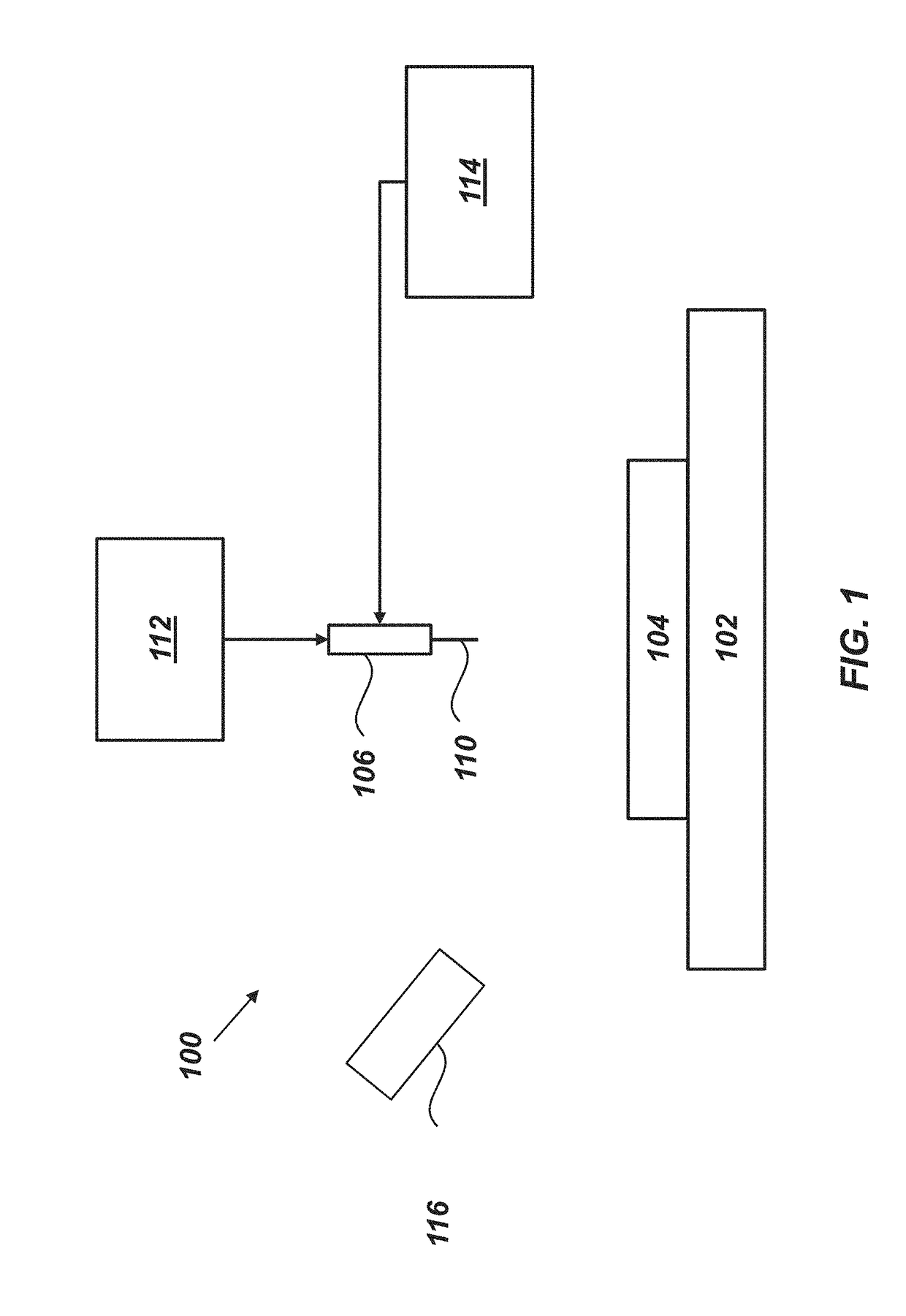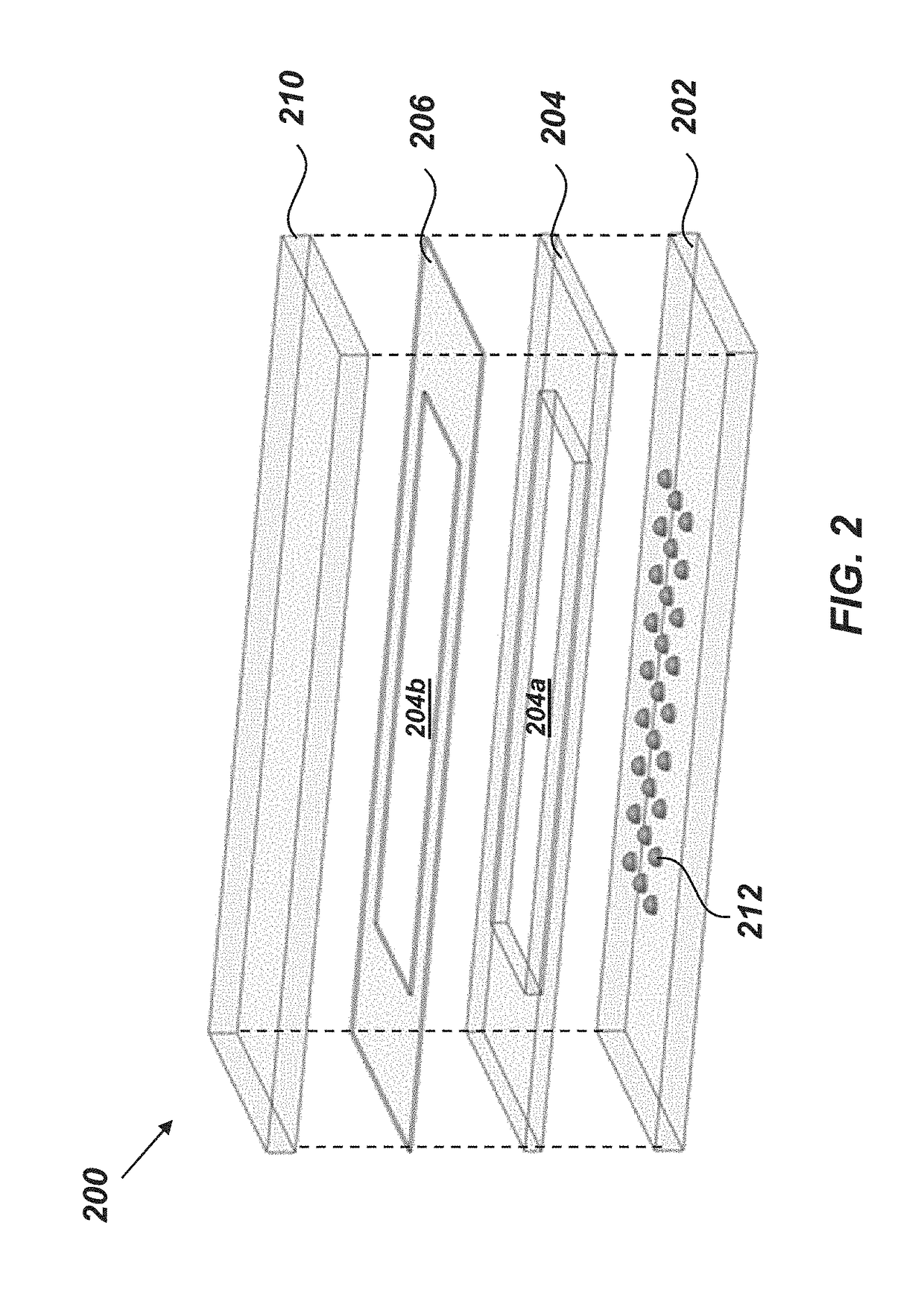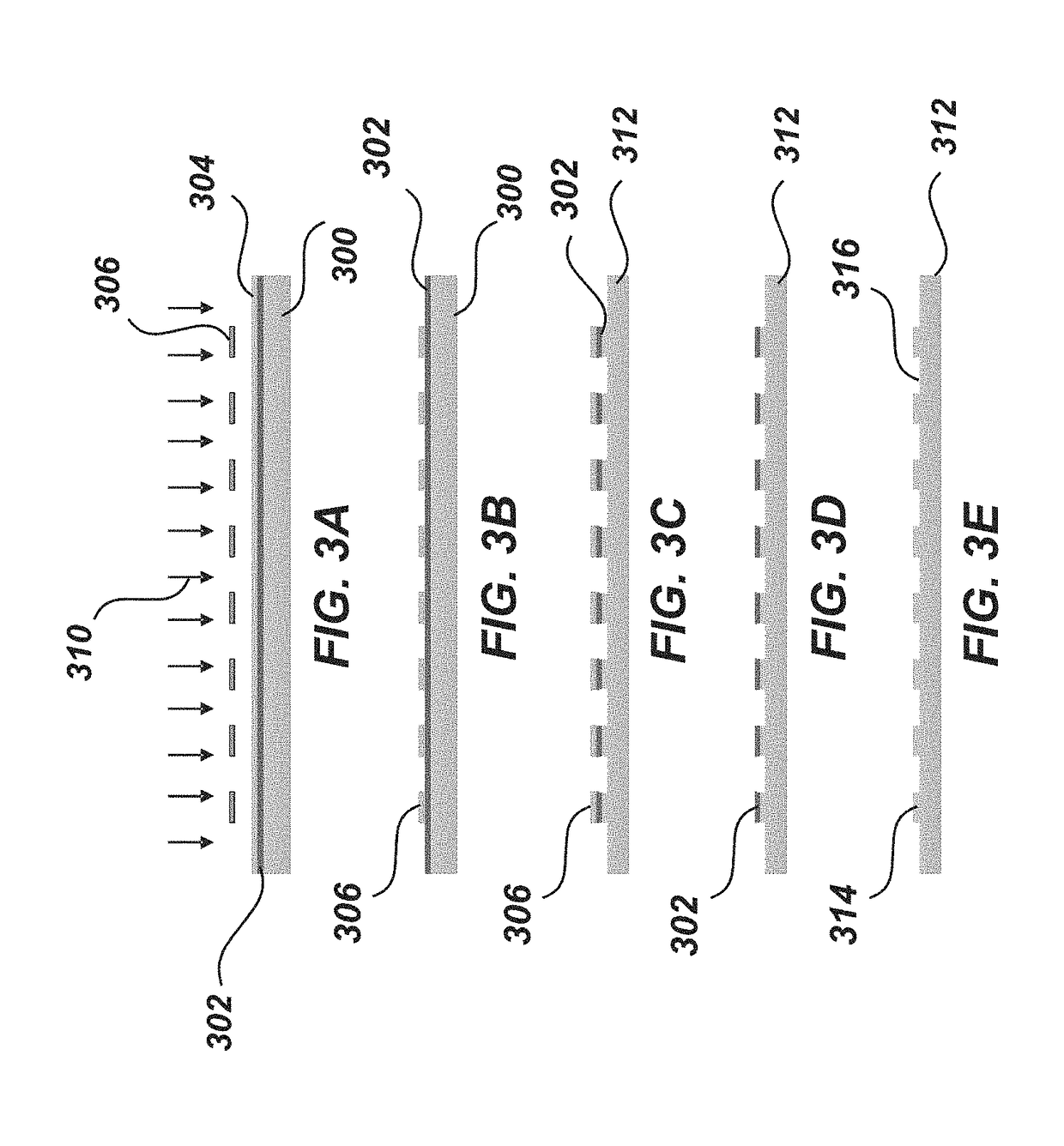Methods and systems of proteome analysis and imaging
a proteome and proteome technology, applied in the field of proteome highthroughput analysis and/or imaging, can solve the problems of limiting the ability to analyze small samples and resolve microheterogeneity within tissues, the inability to effectively prepare and deliver such trace samples to the analytical platform, and the lack of effective analytical tools for performing high-throughput proteome analysis and/or probing the spatial distribution. , to achieve the effect of reducing the total processing volume and minimizing losses
- Summary
- Abstract
- Description
- Claims
- Application Information
AI Technical Summary
Benefits of technology
Problems solved by technology
Method used
Image
Examples
example 1
et
NanoPOTS Platform Design and Operation
[0135]An exemplary embodiment of a nanoPOTS chip, also referred to as a platform or chip 200, is illustrated in FIG. 2. The chip 200 can include a substrate 202, a spacer 204, one or more sealing membrane 206, and a cover 210. When the chip is assembled, the spacer 204 can overlie the substrate 202, the sealing membrane 206 can overlie the spacer 204, and the cover 210 can overlie the sealing membrane 206.
[0136]In certain embodiments, the substrate 202, the spacer 204, and the cover 210 can be formed from a material that is transparent to optical light (e.g., glass). Forming the substrate 202 from glass can facilitate microscopic imaging of samples and minimize protein and peptide adsorption relative to many other materials due to its hydrophilicity and reduced surface charge at low pH (Zhu, Y, et al.).
[0137]As discussed in greater detail below, the substrate 202 can include a physical and / or chemical pattern 212 that defines at least one reac...
example 2
Interface with FACS
[0172]Additionally, experiments showed that the nanoPOTS chip directly interfaced with fluorescence-activated cell sorting (FACS) for cell isolation. With the photolithography-based microfabrication technique, the nanodroplet array size and density can be easily scaled for increased preparation throughput.
[0173]While the current demonstrated limit is to analyze of as few as 10 cells, nanoPOTS represented a highly promising platform towards single mammalian cell proteomics with optimized processing volumes and further refinements to the LC-MS platform. To maximize the overall sensitivity of nanoPOTS for single cells, the total processing volume could be reduced to the low-nanoliter range to further minimize sample loss. FACS or other cell isolation techniques should be used to isolate single cells into nanowells without the minimal exogenous contamination from, e.g., secreted proteins or lysed cells. NanoLC columns with narrower bore (Shen, Y. et al. 2004, and Shen...
example 3
with LCM and Capture Liquid
[0174]Nanowells are prepopulated with DMSO droplets to serve as a sacrificial capture medium for small tissue samples in the nanoPOTS chip (FIGS. 29A-29E) as described below in detail.
[0175]Reagents and chemicals. Deionized water (18.2 MΩ) generated from a Barnstead Nanopure Infinity system (Los Angeles, Calif.) was used throughout. Dithiothreitol (DTT) and iodoacetamide (IAA) were from ThermoFisher Scientific (St. Louis, Mo.), and their working solutions were freshly prepared in 50 mM ammonium bicarbonate buffer before use. n-dodecyl-β-D-maltoside (DDM), Mayer's hematoxylin, eosin Y (alcoholic solution), Scott's Tap Water Substitute, DMSO were purchased from Sigma-Aldrich. Trypsin (MS grade) and Lys-C (MS grade) were from Promega (Madison, Wis.). Other unmentioned reagents were obtained from ThermoFisher.
[0176]Nanowell chip fabrication. The nanowell chip consisted of three parts including a nanowell-containing substrate, a spacer, and a cover plate. The n...
PUM
| Property | Measurement | Unit |
|---|---|---|
| area | aaaaa | aaaaa |
| total surface area | aaaaa | aaaaa |
| surface area | aaaaa | aaaaa |
Abstract
Description
Claims
Application Information
 Login to View More
Login to View More - R&D
- Intellectual Property
- Life Sciences
- Materials
- Tech Scout
- Unparalleled Data Quality
- Higher Quality Content
- 60% Fewer Hallucinations
Browse by: Latest US Patents, China's latest patents, Technical Efficacy Thesaurus, Application Domain, Technology Topic, Popular Technical Reports.
© 2025 PatSnap. All rights reserved.Legal|Privacy policy|Modern Slavery Act Transparency Statement|Sitemap|About US| Contact US: help@patsnap.com



